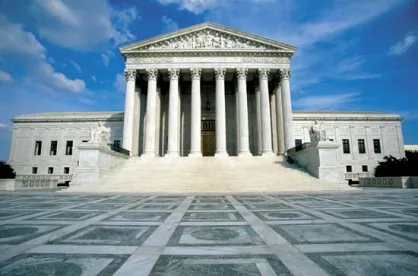On June 21, 2021, the Supreme Court issued its much anticipated decision in United States v. Arthrex, holding: “Decisions by APJs must be subject to review by the Director.” Slip op. at 20. The Supreme Court determined that “Congress has assigned APJs ‘significant authority’ in adjudicating the public rights of private parties, while also insulating their decisions from review and their offices from removal.” Id. at 19. Rather than adopt the Federal Circuit’s severance of tenure protection as the fix for Administrative Patent Judge exercising power that conflicted with the Appointments Clause, the Court instead held that the Director must have discretionary review of Administrative Patent Judge decisions. While Arthrex vests the Director with the discretion to review decisions rendered by APJs and reach his own decision, the Director’s decision remains subject to Article III review before the Federal Circuit. By providing the Director with the “discretion to review decisions rendered by APJs,” the “President remains responsible for the exercise of executive power—and through him, the exercise of executive power remains accountable to the people.” Id. at 23.
Ultimately, the Supreme Court vacated the decision and remanded the case to the Federal Circuit for further proceedings consistent with its opinion. Id. There is still uncertainly in light of the Supreme Court’s mixed decision and how it might be implemented. Regardless, we know at least the following:
-
“Arthrex is not entitled to a hearing before a new panel of APJs.” Id. at 23.
-
“[T]he appropriate remedy is a remand to the Acting Director for him to decide whether to rehear the petition filed by Smith & Nephew.” Id. at 22.
-
“To be clear, the Director need not review every decision of the PTAB.” Id.
Although the Supreme Court’s decision was limited to the matter before it, it seems likely that the USPTO will ultimately provide a process by which the Director has the discretion to review all final written decisions by the PTAB. Once a discretionary review process has been put into place for the Director, its impact on AIA trials before the PTAB is likely to be rare. Many open questions arise for active cases that have received or will receive a final written decision from the PTAB before a USPTO Director discretionary review process is enacted. For example, there are approximately 100 cases subject to a general stay Order by the PTAB in view of Arthrex. And there are also many cases that could be appealed or are already on appeal at the Federal Circuit. Parties in these cases will want to weigh the potential impact of the Supreme Court’s decision and adjust their strategy accordingly. For example, an additional discretionary review may only be viewed as advantageous in certain circumstances.






 />i
/>i

